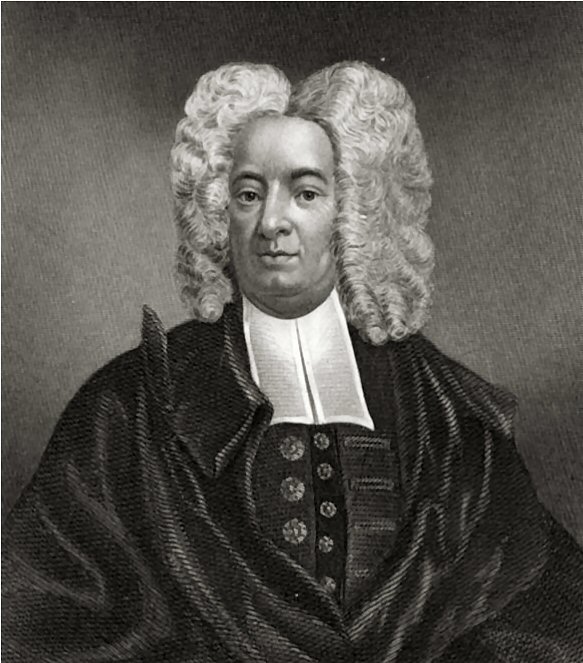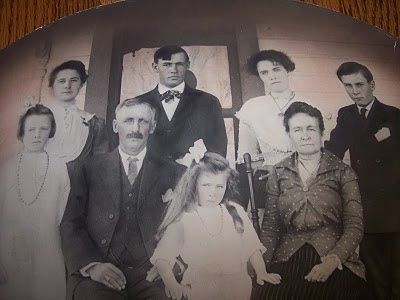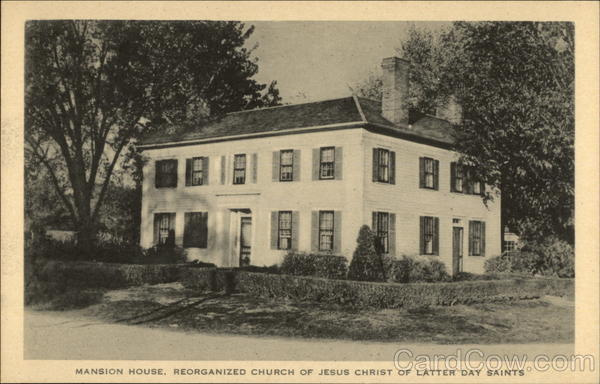
I'm reading a book right now that talks a bit about Cotton Mather (remember reading that awful stuff in English class, "Sinners in the Hands of an Angry God") and life in Puritan America. It reminded me that I haven't actually written about my most notorious ancestor, Hannah Webster Emerson Dustin. Who? You may ask. Well, she has been written, sculpted, painted, admired and feared, and the surest sign of notoriety--featured on Wikipedia. She has also had several things named after her, including an island in New Hampshire, a modern Massachusetts quilt guild, even a locomotive! I am seriously geeking out over all the cool original artifacts, documents, and stuff about her online, but I'll try to limit it to just a bite here. Many of the photos are from Hannahdustin.com. To read the "full" story of her amazing, bloody adventure, click here.
(Me>Dad>Grandpa>Pearl Drake Haynes>Mary Jane Cheney>Ezekiel Wells Cheney>Aaron Cheney>Benjamin Cheney>Joseph Cheney>Daniel Cheney>Hannah Dustin Cheney>Hannah Webster Emerson Dustin.)
Hannah and her husband Thomas were settlers in Haverhill, Massachusetts at an extremely hazardous time. The scandalous Salem Witch trials had taken place just five years earlier in 1692, and 141 "witches" were arrested in neighboring towns. Part of the fury of the trials stemmed from the widespread fear of plague (small pox) and very frequent Indian attacks where settlers were kidnapped and taken to Canada for slavery or ransom, or killed. For this reason, Thomas Dustin (or Duston or Durston, depending on which record you read) was asked by the Massachusetts govt. to build and run a "garrison house" out of brick. The house still stands and serves as a Museum in the summer months.
This garrison house was a ways off from the Dustin home and still under construction in the morning hours of March 16, 1697. Hannah, about age 40, had given birth to her twelfth child, Martha, a few days earlier, and was still recovering in the house with her baby and her neighbor, Mary Neff, serving as nurse. Thomas was out doing chores and spotted the Indians approaching. He grabbed his gun, mounted his horse and shouted to the children to make for the garrison. He didn't make it to the house in time to save Hannah, baby Martha and the nurse, but was able to provide cover for his other 8 as they ran for safety under the fire of arrows. He didn't fire a shot because the Indians knew how long it would take him to reload. All 8 children made it to safety, the elder helping the younger (no doubt greatly aided by his teenage daughter Hannah who later married a Cheney and became our ancestor as well.)
 Twenty-seven others in other neighboring households were killed, and 13 kidnapped.
Twenty-seven others in other neighboring households were killed, and 13 kidnapped.This rescuing father had the honor of capturing the imagination of Nathaniel Hawthorne,(another English class persona; remember The Scarlet Letter? also a native Massachusett who probably grew up hearing this story, but maybe not the part about not firing his weapon) who drew this illustration of Thomas and the children when he wrote an article about Hannah in his American Magazine of Useful and Entertaining Knowledge. The scene is also portrayed at the base of the two Hannah Dustin monuments. So, back to Hannah, Martha and Mary.
The Indians invaded the house, looted it, dragged Hannah (with only one shoe on), Mary and the baby from the house, and set it on fire.
The Abenaki killed baby Martha as soon as they saw she would not allow the women to keep up, and then marched the women into the woods to regroup with the other marauders. The captives were marched at top speed about a dozen miles that first day, through patches of snow and mud and across icy streams. They continued on their strenuous journey north for about two more weeks, until they reached what is now Dustin Island, (near currentPenacook), near the convergence of the Contoocook and Merrimack rivers in New Hampshire. The island was home to Hannah's captor and a few of the others, and they planned to rest there for a few days before continuing to Canada. One of the other Indians there, named "Bampico", spoke English and had kept a young teenage boy, Samuel Lennardson, captive for about 18 months. When Samuel met Hannah and Mary and heard of Hannah's determination to escape the horrors awaiting (particularly running the gauntlet), he became part of their plan. Here is the story of what happened next, as written by the Duston family association and found at hannahdustin.com.
Samuel, who was growing tired of living with the Indians, and in whom a longing for home had been stirred by the presence of the two women, the next day casually asked his master, Bampico, how he had killed the English. "Strike 'em dere," said Bampico, touching his temple, and then proceeded to show the boy how to take a scalp. This information was communicated to the women, and they quickly agreed on the details of the plan. ...After reaching the island, the Indians grew careless. The river was in flood. Samuel was considered one of the family, and the two women were considered too worn out to attempt escape, so no watch was set that night and the Indians slept soundly. Hannah had decided that the time had come.Shortly after midnight she woke Mrs. Neff and Samuel. Each, armed with a tomahawk, crept silently to a position near the heads of the the sleeping Indians - Samuel near Bampico and Hannah near her master. At a signal for Hannah the tomahawks fell, and so swiftly and surely did they perform their work of destruction that ten of the twelve Indians were killed outright, only two - a severely wounded squaw and a boy whom they had intended to take captive - escaping into the woods.Hastily piling food and weapons into a canoe, including the gun of Hannah's late master and the tomahawk with which she had killed him, they scuttled the rest of the canoes and set out down the Merrimack River. Suddenly realizing that without proof their story would seem incredible, Hannah ordered a return to the island, where they scalped their victims, wrapping the trophies in cloth which had been cut from Hannah's loom at the time of the capture, and again set out down the river each taking a turn at guiding the frail craft while the others slept.Thus, traveling by night and hiding by day, they finally reached the home of John Lovewell in old Dunstable, now a part of Nashua, N.H. Here they spent the night, and a monument was erected here in 1902, commemorating the event. The following morning the journey was resumed and the weary voyagers at last beached their canoe at Bradley's Cove, where Creek Brook flows into the Merrimack. Continuing their journey on foot, they at last reached Haverhill in safety. Their reunion with loved ones who had given them up for lost can better be imagined than described. Doubtless Samuel was the hero of the younger generation for many days.Thomas took his wife and the others to the new house which he had been building at the time of the massacre, and which was now completed. Here for some days they rested.
After recovering, Hannah and Thomas set out for Boston with Samuel, Mary and the scalps, where Hannah would tell her story and receive some compensation for the burning of her home.
Here he filed a petition to the Governor and Council, which was read on June 8, 1697 in the House (Mass. Archives, Vol. 70, p. 350), setting forth the above belief and claiming the reward, pleading that "the merit of the Action remains the same" and claiming that "your Petitioner haveing Lost his Estate in that Calamity wherein his wife was carryed into her captivity redrs him the fitter object for what consideracon the publick Bounty shall judge proper for what hath been herein done," etc.
While in Boston Hannah told her story to Rev. Cotton Mather, whose morbid mind was stirred to its depths. He perceived her escape in the nature of a miracle, and his description of it in his "Magnalia Christi Americana" is extraordinary, though in the facts doubtless quite correct and corroborated by the evidence.
Cotton Mather, who I mentioned earlier, was basically the villain of the Salem Witch Trials, but hey, I guess even a villain can tell a good story. By recording Hannah's story, he brought her adventure to a much larger audience, and allowed other authors to retell it as well. Nathaniel Hawthorne, as mentioned, but also the poet John Greenleaf Whittier, Henry David Thoreau, and even DC Comics got a piece of Hannah's pie, in a 1957 edition of Wonder Woman, in a romanticized feature called "Fabulous Females".The part of this story that troubles me is that some of Hannah's victims were children. I read that Samuel killed Bampico first, then Hannah killed her captor--the man who had bashed her baby against a tree, but I don't know who killed the other eight. I'm guessing it was Hannah since she got most of the bounty money. I can imagine that she was highly motivated by revenge, but I also hope that maybe she somehow thought it would be a mercy? Maybe the little ones would die without their parents? Maybe it was young Samuel, a "child" himself, who did it. I don't know. The people at that time also thought Indians were no better than animals. Or maybe there really was danger that the children would give an alarm.
One last artifact may shed a little light on Hannah's feelings about this. In the early 1929, a Haverhill Congregational church was being renovated, and its vault cleaned out. Inside was a letter that Hannah wrote to the elders of that church in1724, 27 years after her capture. What a find!! She was asking the elders for reinstatement to the church. I attached the full letter here (how often do you get to read about what your 17th century female ancestor's favorite scriptures were, for example?) but the part that stuck out to me was that in all that time, she hadn't felt worthy, "fearing I should give offence & fearing my own unworthiness has kept me back". I wonder if that means she felt any godly sorrow for what she had done? Maybe she was referring to something else entirely, but that is how I picture it in my mind. Enjoy her letter, and also the shot of the Hannah Duston train.
“I desire to be Thankful that I was born in a
Land of Light & Baptized when I was Young; and
had a Good Education by My Father, Tho I took
but little Notice of it in the time of it; -I am
Thankful for my Captivity, twas the Comfortablest
time that ever I had; In my Affliction God made
his Word Comfortable to me. I remembered 43d
ps.ult-- and those words came to my mind—
ps118.17….I have had a great Desire to come to
the Ordinance of the Lord's Supper a Great While
but fearing I should give offence & fearing my
own unworthiness has kept me back; reading a
book concerning Suffering Did much awaken
me. In the 55th of Isa. beg. We are invited to
come; --Hearing Mr. Moody preach out of ye 3d of
Mal. 3 last verses it put me upon Consideration.
Ye 11th of Matthew has been Encouraging to me-I
have been resolving to offer my Self from time to
time ever since the Settlement of the present
Ministry; I was awakened by the first Sacram 'l
Sermon (Luke 14.17) But Delays and fears
prevailed upon me; - But I desire to delay no
longer, being Sensible it is My Duty-, I desire the
Church to receive me tho' it be the eleventh hour;
and pray for me-- that I may hon'r God and obtain
the Salvation of my Soul.























